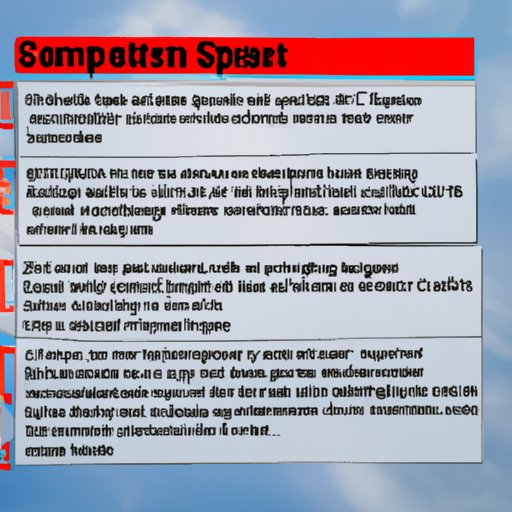Introduction
A counterclaim is an important element of an argumentative essay. It allows you to acknowledge the opposing viewpoint and provide evidence to refute it. By presenting a counterclaim, you can strengthen your own argument and demonstrate that you are considering all sides of the issue. Starting a counterclaim paragraph effectively requires careful research and planning. This article will explain the purpose of a counterclaim paragraph and outline its structure. Additionally, you’ll find tips on brainstorming ideas and writing an effective counterclaim. Finally, you’ll see examples of good counterclaims to get you started.
Brainstorming Ideas
Before you start writing your counterclaim paragraph, it’s important to do some research. Consider what arguments the other side might make and look for evidence that could be used to refute them. According to a study by the University of California, Los Angeles, “the best way to prepare for an argument is to anticipate the opposition’s arguments and plan counterarguments in advance.”
You should also read up on the topic and look for reliable sources to support your counterclaim. Take notes as you go to keep track of any information you want to use in your essay. Once you have a better understanding of the issue, it’s time to start brainstorming ideas for your counterclaim.
When coming up with ideas for your counterclaim, ask yourself questions such as: What evidence could I use to refute the other side’s argument? What points could I make to support my own argument? How can I present my counterclaim in a persuasive manner? Answering these questions will help you come up with ideas for your counterclaim.
Writing an Effective Counterclaim
Once you have a list of ideas, you can start writing your counterclaim. First, introduce the opposing viewpoint in a neutral manner. Make sure to avoid using language that could be seen as attacking or belittling the other side. Instead, focus on presenting their argument objectively.
Next, explain why the opposing viewpoint is wrong and provide evidence to support your counterclaim. Use facts, statistics, quotes, and other forms of evidence to back up your argument. This will help make your counterclaim more convincing and show that you’ve done your research.
Finally, end your counterclaim paragraph with a strong conclusion. Summarize your main points and restate your position in a clear and concise manner. Your goal is to leave the reader with a clear understanding of your argument and why it is the right one.
Examples of Good Counterclaims
To help you get started, here are some examples of good counterclaims. Keep in mind that these are just examples, so you should tailor your counterclaim to fit your own argument.
Example 1: While it is true that some people may benefit from drinking energy drinks, there is compelling evidence that they can be dangerous. For example, a study by the American Academy of Pediatrics found that energy drinks can lead to serious health risks, such as heart palpitations, high blood pressure, and dehydration. Therefore, it is important to be aware of the potential risks before consuming energy drinks.
Example 2: Some people argue that genetically modified foods are safe and beneficial. However, research suggests that they can have negative health effects. For instance, a study published in the journal Nature found that genetically modified corn caused liver and kidney damage in rats. This suggests that further research is needed to determine the safety of genetically modified foods.
Conclusion
A counterclaim paragraph is an important part of an argumentative essay. It allows you to acknowledge and refute the opposing viewpoint while strengthening your own argument. To write an effective counterclaim, start by doing some research and brainstorming ideas. Then, introduce the opposing viewpoint in a neutral manner, explain why it is wrong, and provide evidence to support your counterclaim. Finally, end your paragraph with a strong conclusion. With the tips and examples provided in this article, you’ll be able to start a counterclaim paragraph with confidence.
(Note: Is this article not meeting your expectations? Do you have knowledge or insights to share? Unlock new opportunities and expand your reach by joining our authors team. Click Registration to join us and share your expertise with our readers.)
